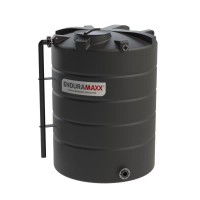Plating Effluent Storage Tanks
DescriptionPlating Effluent Storage Tanks for Plating Wastewater
Plating Effluent Storage Tanks are used in the plating and metal finishing for storage of wastewater prior to treatment and for carrying out of ph. adjustment and as equalisation tanks. The wastewater produced by the plating process requires treatment to remove heavy metals, oils, and toxins before it is safe to be discharged to the sewer. Wastewater treatment standards and consent to discharge require effective methods to keep compliant and ongoing removal of wastes produced.
Wastewater from Plating Processes
In plating processes, lots of wastewater is generated through cleaning, acid pickling, plating, and especially during rinsing. Spent acid and cleaning solution dumps add to the complexity of waste treatments that will be required. More details on the treatment standard required are available online here.
Where does metal finishing wastewater come from?
Metal finishing wastewater sources depend on the type of metal finishing and plating which is carried out.
Common sources for this wastewater include.
Chrome, nickel, copper, and zinc plating
Electrocoating and electroplating
Gold Plating
Hot Dip Galvanization
Coatings
Pickling
Electropolishing
Anodizing
View our article on how plating waste is treated here
Plating Waste Equalization Tanks
To start with wastewater from streams are collected in the equalization tank. Equalisation tanks designed to even out the flow to avoid fluctuations in inflow from batch dumps. These tanks are generally fitted with a mixer to keep a homogeneous mixture with solids in suspension. Mixer baffles are available to facilitate mixing.
Plating Waste pH Adjustment Tanks
Adjustment is carried out in ph. adjustment tank. By adjusting the gross pH of the wastewater makes treatment easier resulting in less chemical being used later in the process.
Enduramaxx manufactures vertical tanks that are suitable for use as plating effluent storage tanks. These industrial tanks are offered with liquid level sensor assemblies, PN16 and ANSI flanges and BSP plastic welded sockets.
In plating processes, lots of wastewater is generated through cleaning, acid pickling, plating, and especially during rinsing. Spent acid and cleaning solution dumps add to the complexity of waste treatments that will be required. More details on the treatment standard required are available online here.
Where does metal finishing wastewater come from?
Metal finishing wastewater sources depend on the type of metal finishing and plating which is carried out.
Common sources for this wastewater include.
Chrome, nickel, copper, and zinc plating
Electrocoating and electroplating
Gold Plating
Hot Dip Galvanization
Coatings
Pickling
Electropolishing
Anodizing
View our article on how plating waste is treated here
Plating Waste Equalization Tanks
To start with wastewater from streams are collected in the equalization tank. Equalisation tanks designed to even out the flow to avoid fluctuations in inflow from batch dumps. These tanks are generally fitted with a mixer to keep a homogeneous mixture with solids in suspension. Mixer baffles are available to facilitate mixing.
Plating Waste pH Adjustment Tanks
Adjustment is carried out in ph. adjustment tank. By adjusting the gross pH of the wastewater makes treatment easier resulting in less chemical being used later in the process.
Enduramaxx manufactures vertical tanks that are suitable for use as plating effluent storage tanks. These industrial tanks are offered with liquid level sensor assemblies, PN16 and ANSI flanges and BSP plastic welded sockets.
Visit the Enduramaxx website for more information on Plating Effluent Storage Tanks


